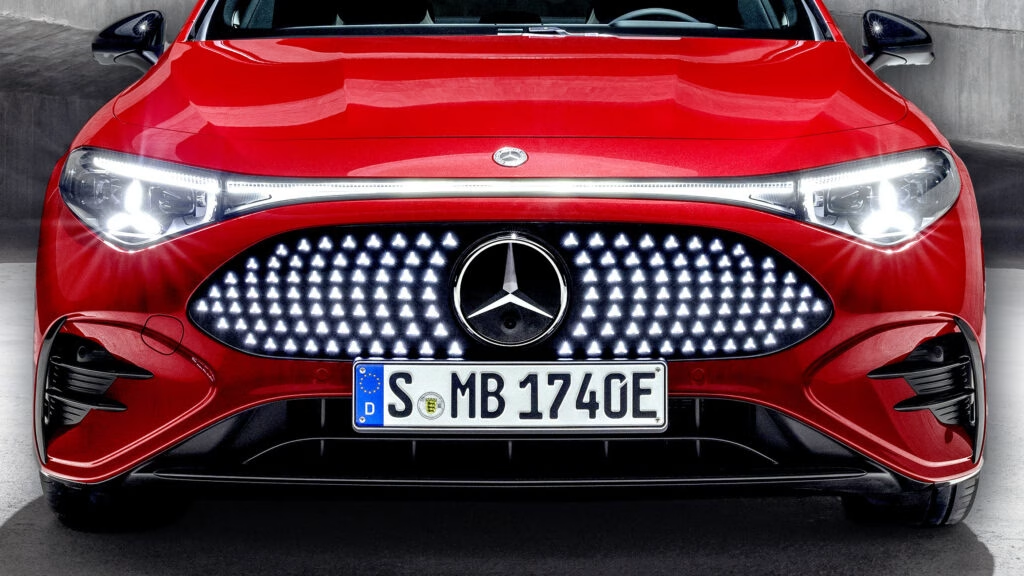The redesigned Mercedes CLA EV is stirring up quite a buzz, but not all of it is positive. While the car boasts a sleek design and advanced technology, it seems to have a significant oversight that could leave potential owners scratching their heads. Let’s dive into what this means for drivers and why it’s raising eyebrows in the automotive community.
What’s the Deal with Charging Limitations?
One of the standout features of the Mercedes CLA EV is its impressive 800V DC fast charging capability, allowing for rapid charging times. However, here’s the catch: the vehicle lacks a DC/DC booster, which means it can only utilize 800V DC fast chargers. This limitation restricts drivers from using many common charging stations, including a significant portion of Tesla’s Supercharger network and various 50 kW public chargers. Imagine planning a road trip only to find that you can’t charge your car at a station that’s conveniently located along your route. Frustrating, right?
This oversight seems particularly surprising for a luxury brand like Mercedes, which typically prides itself on providing a seamless and premium experience for its customers. The absence of a voltage converter not only limits charging options but also raises questions about the brand’s commitment to user convenience.
Why Did Mercedes Skip the Booster?
Mercedes has not provided a clear explanation for the omission of the DC/DC booster. Some speculate that the decision was driven by the brand’s push for high-performance charging capabilities. The CLA EV is designed to achieve a 320 kW DC fast charging speed, allowing it to go from 10% to 80% charge in just 22 minutes. However, this ambition comes at a cost—namely, the flexibility to charge at a wider range of stations.
In contrast, other manufacturers like Hyundai and Kia have opted to include DC-to-DC voltage boosters in their electric vehicles. This strategic choice allows their cars to support both fast charging and a broader array of charging stations, making them more user-friendly. For a luxury vehicle, the decision to forgo such a feature feels like a misstep that could alienate tech-savvy consumers who expect more from their investment.
What Does This Mean for Buyers?
For potential buyers, this limitation might come as a shock. While browsing through configurators and specifications, many may not realize that the CLA EV cannot charge at 400V stations. In fact, Mercedes has included a disclaimer stating that charging at these stations is not possible, and they won’t even appear in the vehicle’s navigation system. This lack of transparency could lead to confusion and frustration for new owners who might assume they have access to a full range of charging options.
Interestingly, there’s speculation that the Norwegian version of the CLA EV may come equipped with a DC/DC booster. If true, this could indicate that Mercedes is taking a market-specific approach to address consumer needs. However, it also raises questions about why such a crucial feature wouldn’t be standard across all models.
Navigating the EV Landscape
As the electric vehicle market continues to evolve, consumers are becoming increasingly discerning about their choices. With more options available than ever, buyers are looking for vehicles that not only perform well but also offer convenience and flexibility. The Mercedes CLA EV, while stylish and technologically advanced, may fall short in these areas due to its charging limitations.
For those considering an electric vehicle, it’s essential to do thorough research and understand the specifics of charging capabilities. Look for models that offer a comprehensive charging network and the flexibility to use various charging stations. After all, the last thing you want is to be left stranded without a way to recharge your vehicle.
The big takeaway? The Mercedes CLA EV isn’t about perfection—it’s about smarter adjustments. If you’re in the market for an electric vehicle, consider starting with one change this week, and you’ll likely spot the difference by month’s end.

